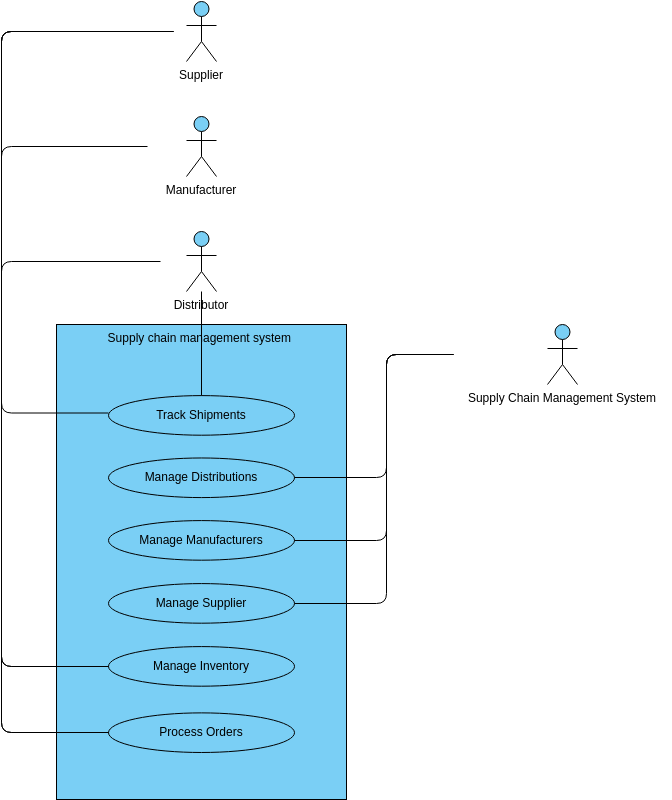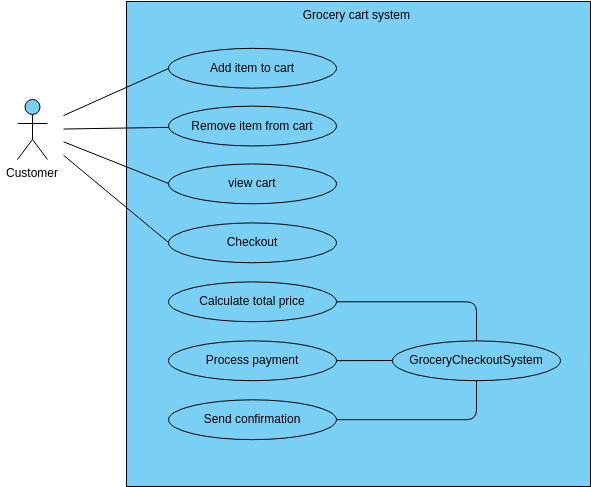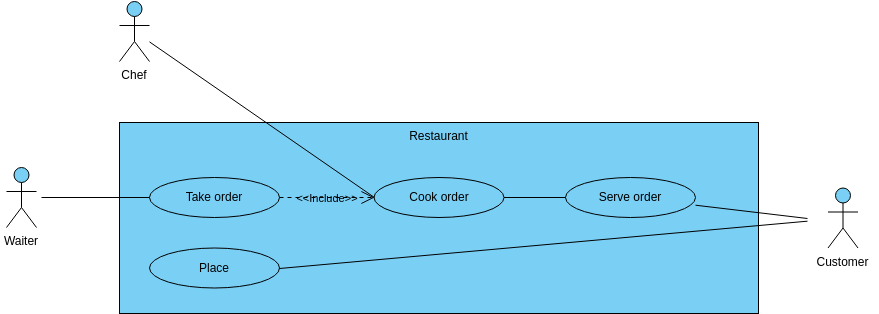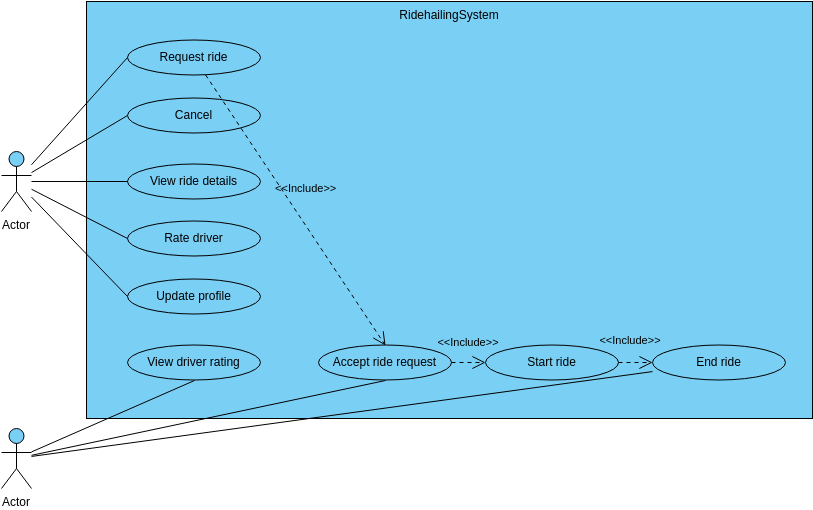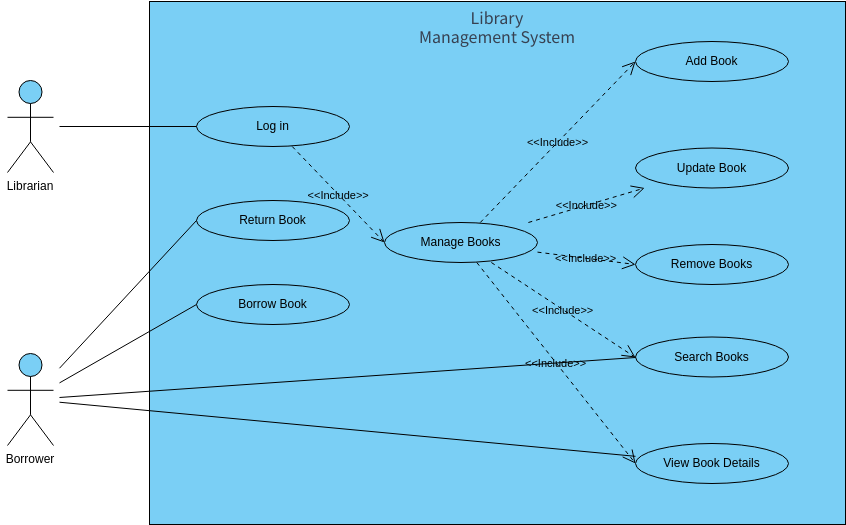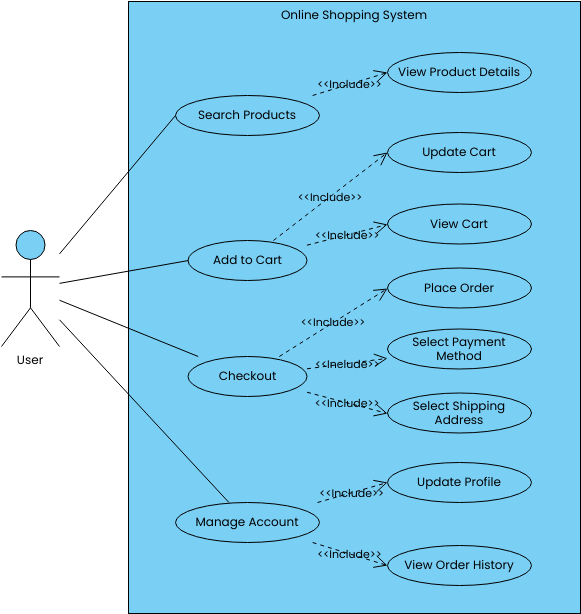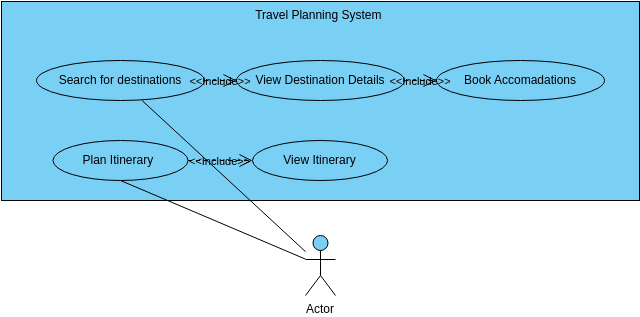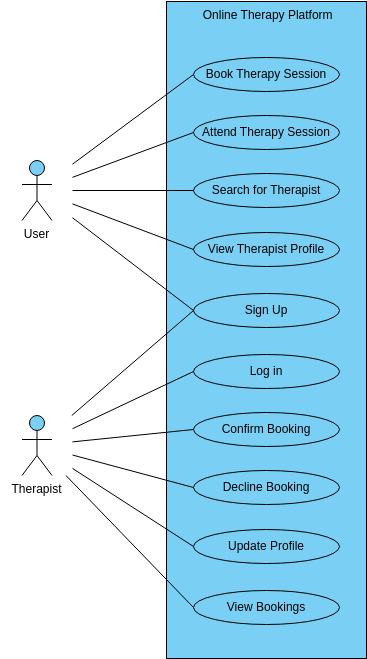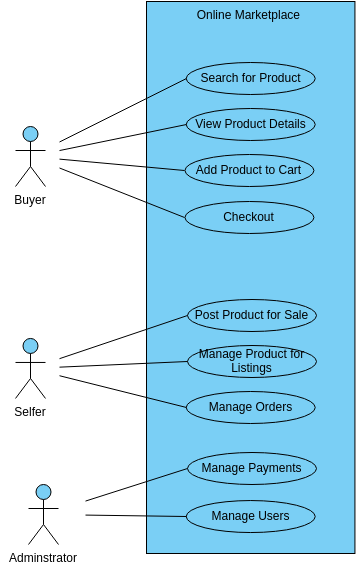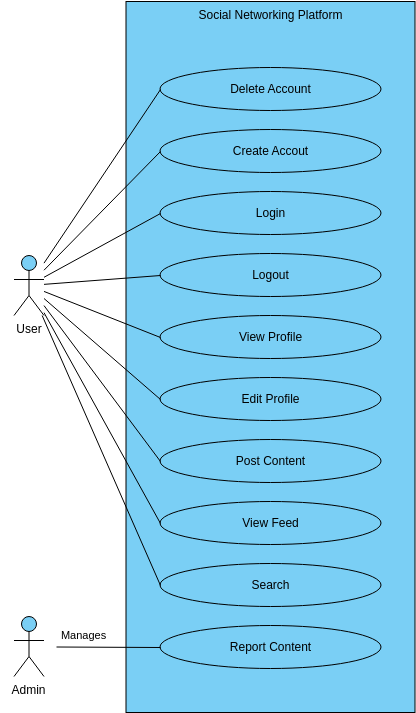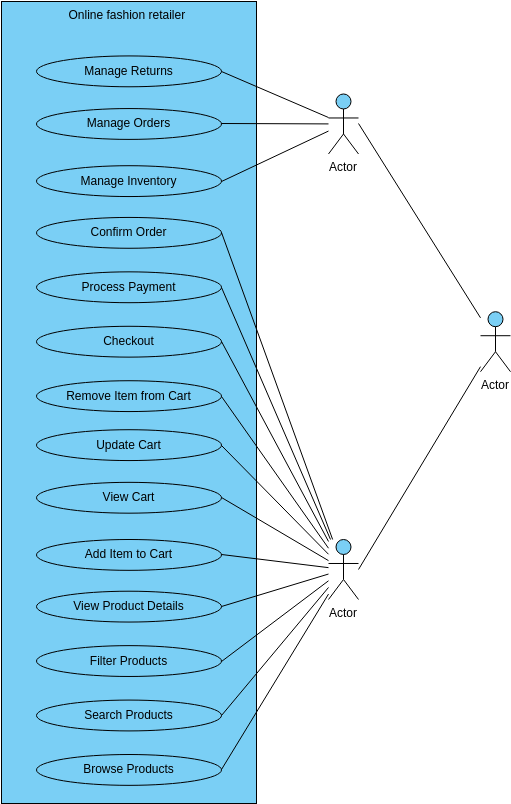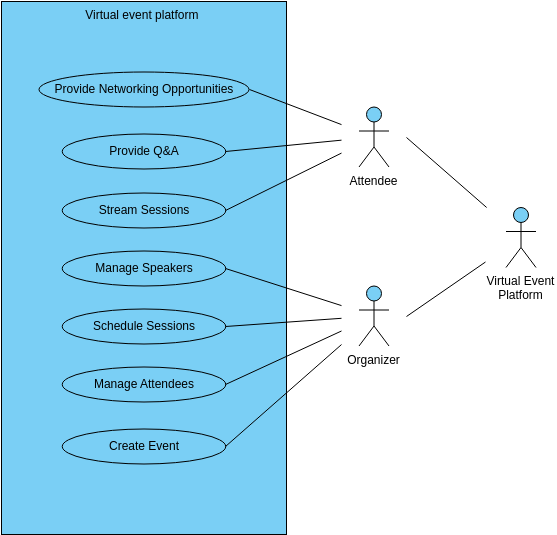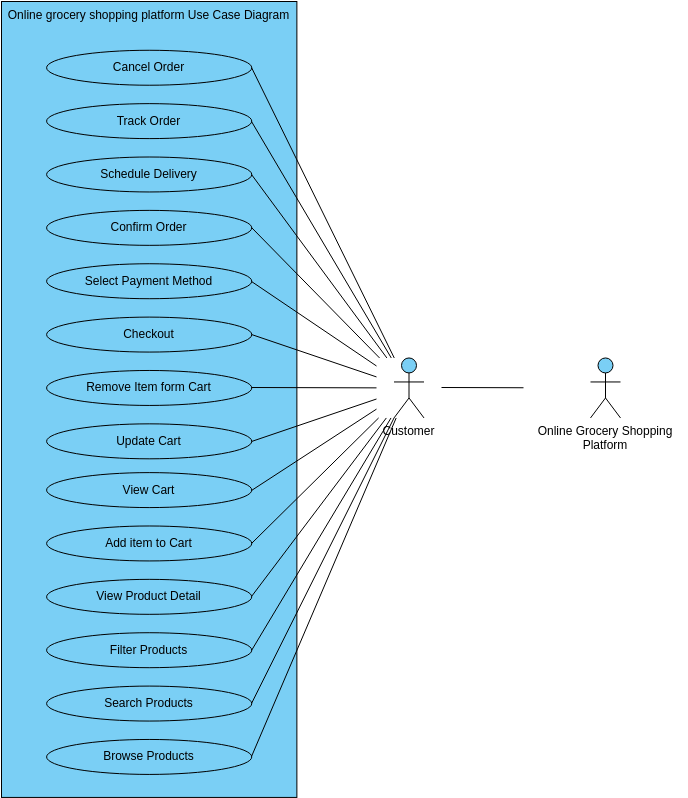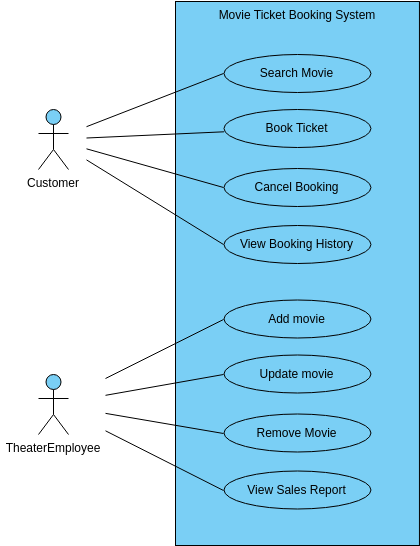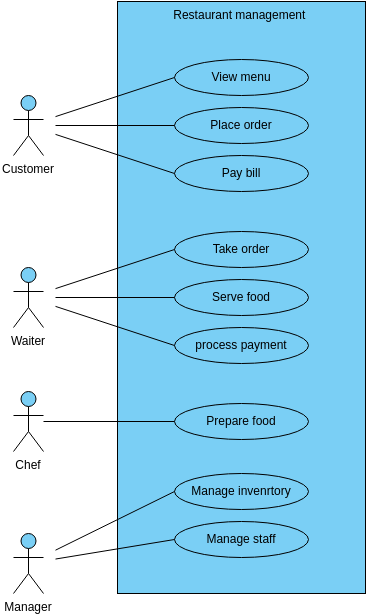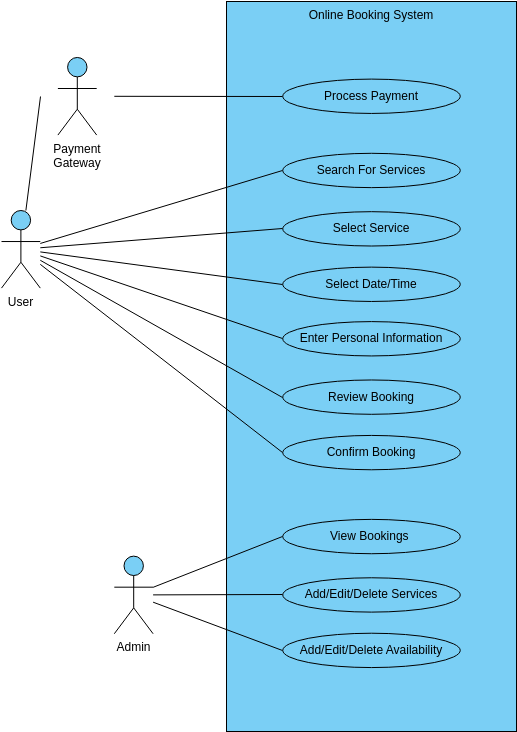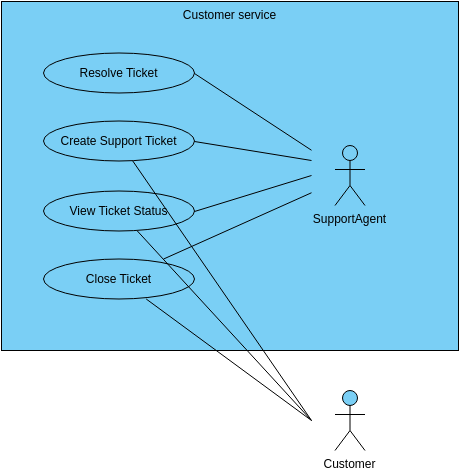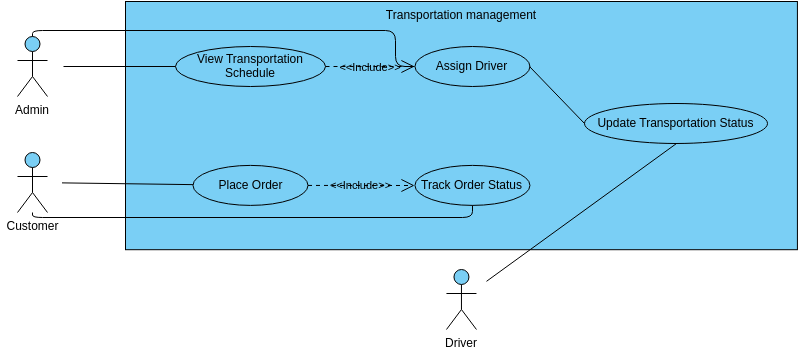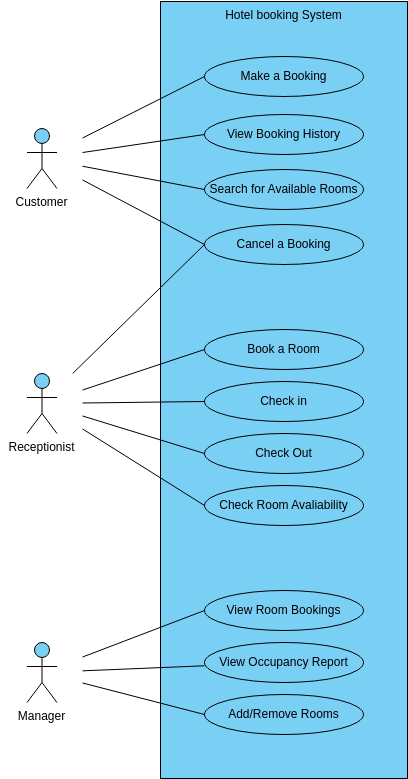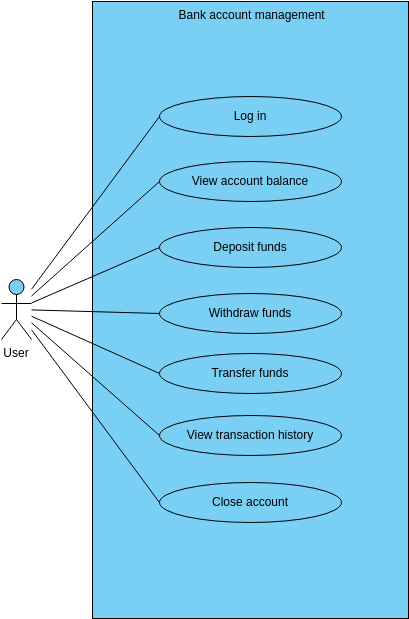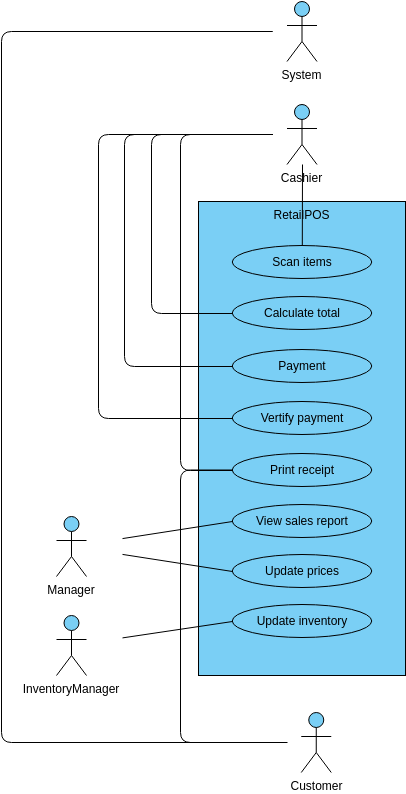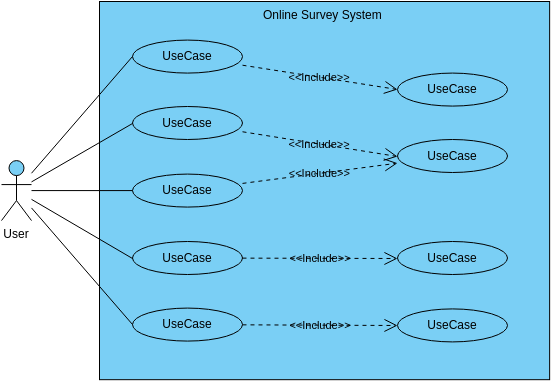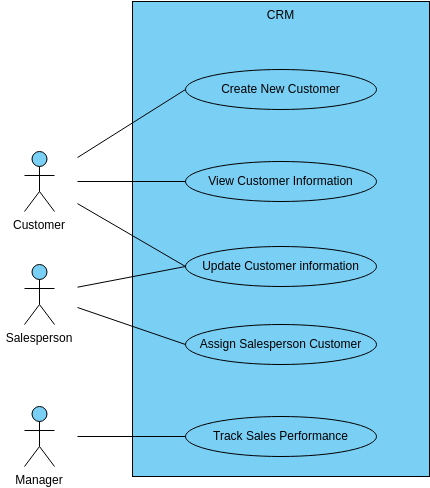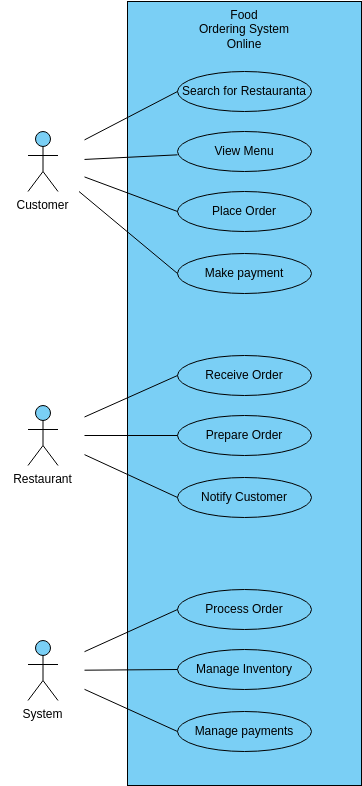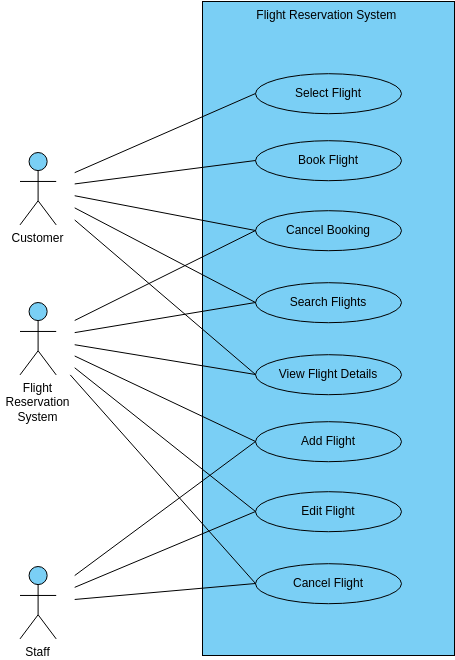Supply chain management system
The Supply chain management system use case diagram outlines the different actions that can be taken by users of the system. The six use cases in the diagram include "Track Shipments", "Manage Distributions", "Manage Manufacturers", "Manage Supplier", "Manage Inventory", and "Process Orders".
"Track Shipments" allows users to track shipments of raw materials or finished products as they move through the supply chain. "Manage Distributions" enables users to manage the logistics of product delivery, including scheduling deliveries and managing transportation. "Manage Manufacturers" involves managing contracts, negotiating prices, and ensuring that manufacturers meet quality standards. "Manage Suppliers" involves identifying potential suppliers, negotiating contracts, and managing relationships with suppliers.
"Manage Inventory" involves tracking inventory levels, managing stock levels, and ensuring that inventory is available when needed. "Process Orders" involves managing the flow of orders through the supply chain, from order placement to delivery. The Supply chain management system use case diagram provides a clear and concise representation of the different actions that can be taken by users of the system, ultimately contributing to the success of the organization.
In summary, the Supply chain management system use case diagram is an essential tool for managing the various aspects of the supply chain effectively. By outlining the different actions that can be taken, the diagram ensures that the supply chain is managed consistently and efficiently. Overall, the use case diagram can help to improve communication among team members, reduce the risk of errors or inefficiencies, and ultimately contribute to the success of the organization.
Why is it important to create supply chain management system?
Creating a Supply chain management system is important for organizations that want to manage their supply chain effectively and efficiently. A supply chain is a complex network of suppliers, manufacturers, distributors, and retailers that work together to bring products to market. A well-designed supply chain management system can help organizations to manage this network more effectively, reducing costs, improving delivery times, and enhancing overall performance.
One of the main benefits of creating a supply chain management system is that it can help organizations to reduce costs. By optimizing the supply chain, organizations can reduce waste, eliminate unnecessary steps in the process, and streamline operations. This can help to reduce costs and increase profitability, ultimately contributing to the success of the organization.
Another benefit of creating a supply chain management system is that it can help organizations to improve delivery times. By optimizing the supply chain, organizations can ensure that products are delivered to customers more quickly and efficiently. This can help to improve customer satisfaction and build loyalty, ultimately contributing to the success of the organization.
A supply chain management system can also help organizations to manage risk more effectively. By providing visibility into the supply chain, organizations can identify potential bottlenecks or inefficiencies and take proactive steps to mitigate risk. This can help to reduce the risk of disruptions to the supply chain, ultimately contributing to the success of the organization.
Searching for some flowchart templates? Go to Visual Paradigm Online and select some designs for customization now!
